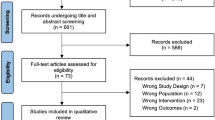Abstract
Purpose
Initial success rates for fibrin glue ablation of cryptoglandular transsphincteric fistulas have been disappointing. We examined long-term outcomes after initially successful fibrin glue ablation of cryptoglandular transsphincteric fistulas.
Methods
Retrospective review identified 36 adult patients with cryptoglandular transsphincteric fistula Tisseel VH® fibrin glue ablation that was performed from May 2000 to March 2005. Fibrin glue ablations were performed under supervision of fellowship-trained colorectal surgeons. Follow-up interval was based on time until recurrence of fistula or time of last fistula-free evaluation.
Results
Twenty-four men and 12 women patients had a mean age of 50 (range, 27–85) years. Twenty patients responded to initial fibrin glue ablation treatment. Two additional patients healed with secondary fibrin glue ablation. Sixty-six percent (22/33 patients) of cryptoglandular transsphincteric fistulas were closed at three months. Eleven patients failed fibrin glue ablation at a mean of 33 (range, 6–41) days. Seventeen of 22 short-term success patients (3 months) were available for long-term follow-up. Ninety-four percent (16/17 patients) remained healed at final long-term follow-up. The remaining patient recurred just before the six-month follow-up.
Conclusions
Despite the suboptimal early success rate of fibrin glue ablation for cryptoglandular transsphincteric fistulas, when a fistula does close for at least six months this appears to be a durable closure. A single patient recurred after appearing healed at the three-month check.

Similar content being viewed by others
References
Grey E. Fibrin as a haemostatic in cerebral surgery. Surg Gynecol Obstet 1915;21:452–4.
Hjortrup A, Moesgaard F, Kjaergard J. Fibrin adhesive in the treatment of perineal fistulas. Dis Colon Rectum 1991;34:752–4.
Aitola P, Hiltunen KM, Maitkainen M. Fibrin glue in perianal fistulas: a pilot study. Ann Chir Gynaecol 1999;88:136–8.
Buchanan GN, Bartram CI, Phillips RK, et al. Efficacy of fibrin sealant in the management of complex anal fistula: a prospective trial. Dis Colon Rectum 2004;47:432–6.
Loungnarath R, Dietz DW, Mutch MG, et al. Fibrin glue treatment of complex anal fistulas has low success rate. Dis Colon Rectum 2004;47:432–6.
Zmora O, Mizrahi N, Rotholtz N, et al. Fibrin glue sealing in the treatment of perineal fistulas. Dis Colon Rectum 2003;46:584–9.
Person B, Wexner SD. Novel technology and innovations in colorectal surgery: the circular stapler for treatment of hemorrhoids and fibrin glue treatment of perianal fisulae. Surg Innov 2004;11:241–52.
Abel ME, Chiu YS, Russell TR, et al. Autologous fibrin glue in the treatment of rectovaginal and complex fistulas. Dis Colon Rectum 1993;36:447–9.
Chan KM, Lau CW, Lai KK, et al. Preliminary results of using a commercial fibrin sealant in the treatment of fistula-in-ano. J R Coll Surg Edinb 2002;47:407–10.
Venkatesh KS, Ramanujam P. Fibrin glue application in the treatment of recurrent anorectal fistulas. Dis Colon Rectum 1999;42:1136–9.
Cintron JR, Park JJ, Orsay CP, et al. Repair of fistulas-in-ano using fibrin adhesive: long-term follow-up. Dis Colon Rectum 2000;43:944–9.
Lindsey I, Smilgin-Humphreys MM, Cunningham C, et al. A randomized, controlled trial of fibrin glue vs. conventional treatment for anal fistula. Dis Colon Rectum 2002;45:1608–15.
Sentovich SM. Fibrin glue for anal fistulas: long-term results. Dis Colon Rectum 2003;46:498–502.
Patrlj L, Kocman B, Martinac M, et al. Fibrin glue-antibiotic mixture in the treatment of anal fistulae: experience with 69 cases. Dig Surg 2000;17:77–80.
Salim AS, Ahmed TM. KTP-Laser and fibrin glue for treatment of fistulae in ano. Saudi Med J 2001;22:1022–4.
Swinscoe MT, Ventakasubramaniam AK, Jayne DG. Fibrin glue for fistula-in-ano: the evidence reviewed. Tech Coloproctol 2005;9:89–94.
Author information
Authors and Affiliations
Corresponding author
Additional information
Poster presentation at the meeting of The American Society of Colon and Rectal Surgeons, St. Louis, Missouri, June 2 to 6, 2007.
Reprints are not available.
About this article
Cite this article
Adams, T., Yang, J., Kondylis, L.A. et al. Long-Term Outlook after Successful Fibrin Glue Ablation of Cryptoglandular Transsphincteric Fistula-in-Ano. Dis Colon Rectum 51, 1488–1490 (2008). https://doi.org/10.1007/s10350-008-9405-2
Received:
Revised:
Accepted:
Published:
Issue Date:
DOI: https://doi.org/10.1007/s10350-008-9405-2




